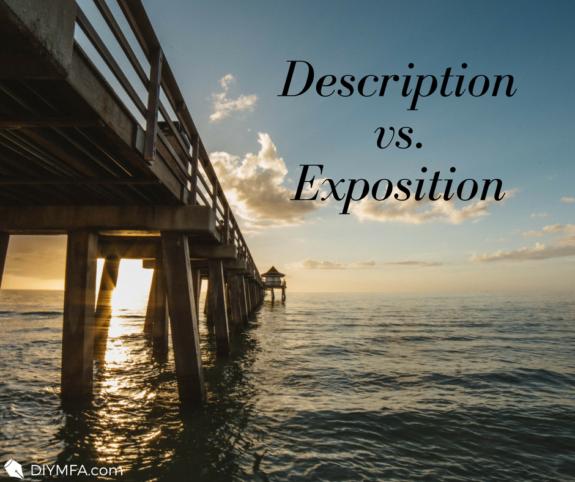Dialogue is easy to spot because it has those nifty little quotation marks, but not all text that isn’t dialogue can be lumped together. The difference between description and exposition can be tricky to determine but it is most definitely there. The key is to remember this equation:
How can we distinguish between description and exposition? Here are some of the key differences.
Exposition . . .
- Gives a series of events or facts.
- Skims over moments that are not important.
- Communicates information to the reader quickly and directly.
- Tells us, doesn’t show.
Description . . .
- Paints a picture of a specific moment or element of the story.
- Digs into one moment, showing the reader the details.
- Makes the reader infer and discover information.
- Shows, doesn’t tell.
The key with description and exposition is to know when to use each one. Many writing teachers give broad instructions like “Show, don’t tell.” That would imply that writers should always prefer description over exposition, but the that’s not always the case. There is a time and place for both.
Exposition:
Is crucial for getting from point A to point B in the story. If you used only description, then the stories would never go anywhere. Without exposition, the reader would be stuck in each individual moment of the story, regardless of whether they were essential moments or not. The key is to show the important parts of the story and move quickly past the less critical moments.
Description:
Is useful when you want to put the reader in a specific moment of the story. When you use description, the reader has to work harder because description forces us to engage with the text on a deeper level. On the other hand, description also is one of the main things that pulls us into that moment and gives us that feeling of “being lost in the story.”
When it comes to description and exposition, a good writer doesn’t use just one and avoid the other. In the end, it’s all about finding a balance between the two and knowing how to use each technique to the story’s best advantage.







